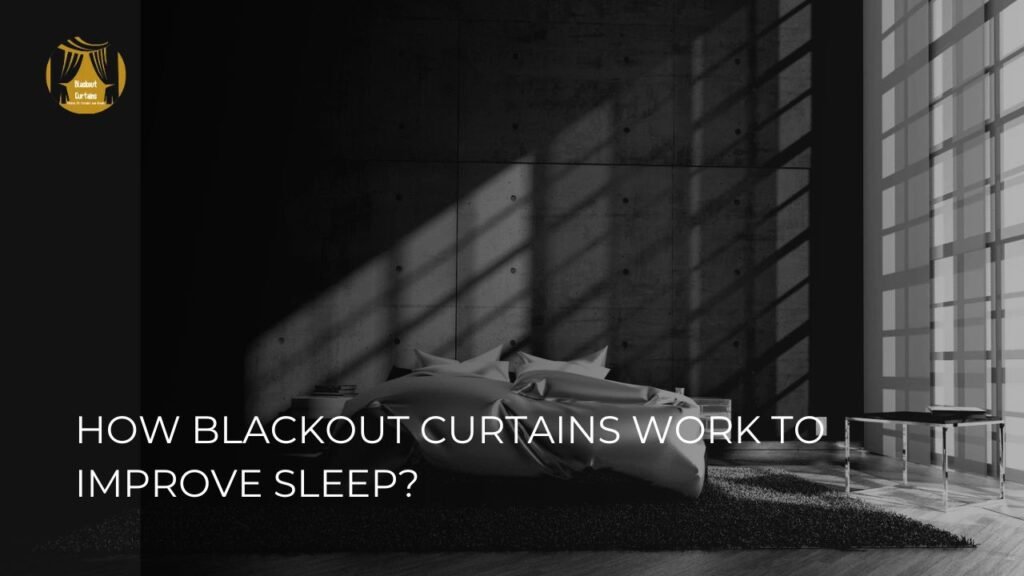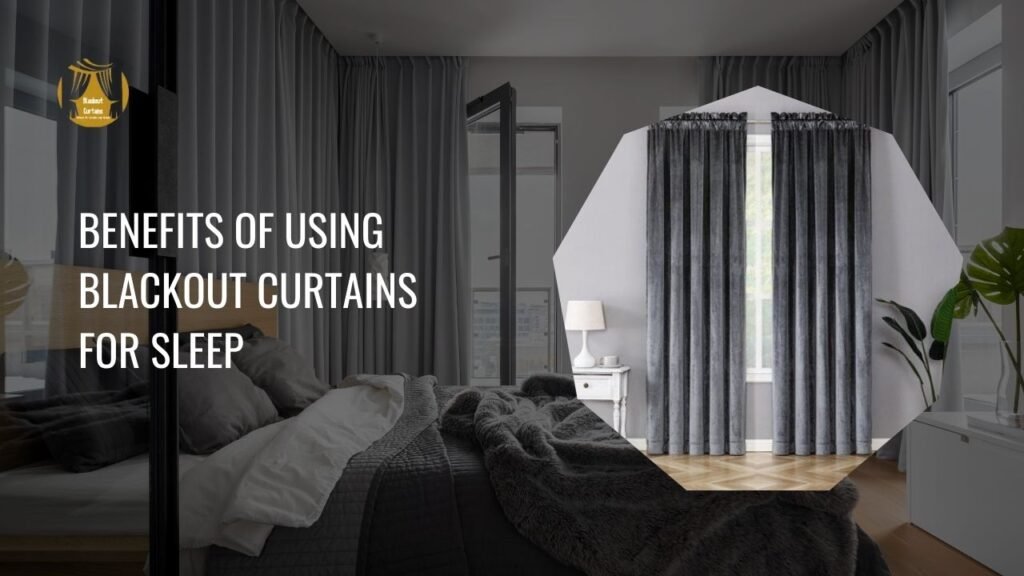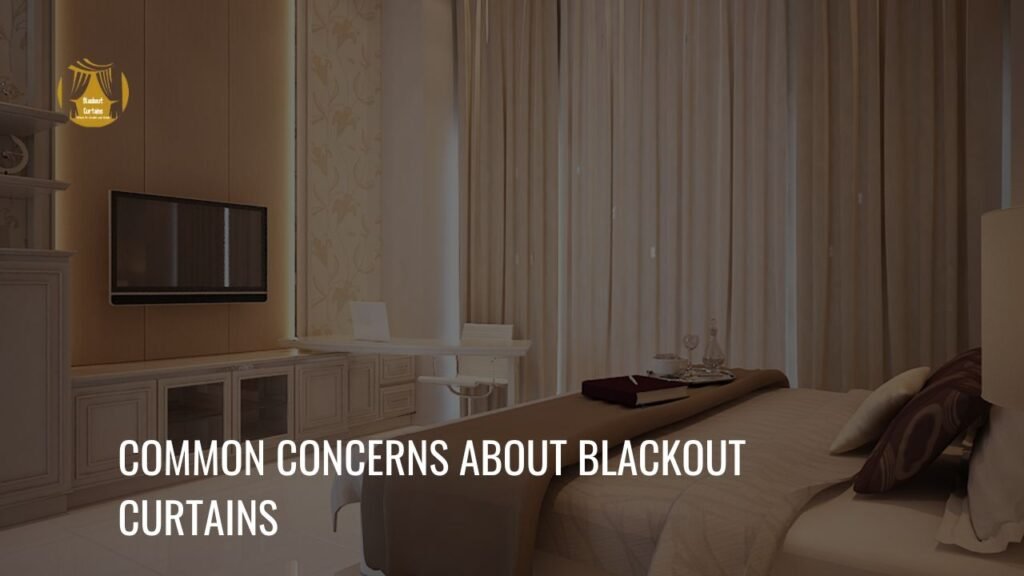Sleep is one of the most essential pillars of health, yet many people struggle to get enough quality rest. One of the biggest reasons behind poor sleep is light exposure, especially in today’s world where artificial lighting, screens, and streetlights can interfere with our natural sleep cycles. To understand why blackout curtains are so effective at improving sleep, we need to understand the science of how light affects our bodies.
Our sleep-wake cycle, also known as the circadian rhythm, is regulated by a hormone called melatonin. Melatonin is often called the “sleep hormone” because it signals to our body that it’s time to wind down and prepare for rest. However, melatonin production is highly sensitive to light, especially blue light, which is emitted by the sun, smartphones, TVs, and LED bulbs. When your eyes detect light, especially during nighttime, your brain suppresses melatonin production, making it harder to fall asleep or stay asleep.
This is where blackout curtains come in. By blocking out all external light sources, including sunlight during early mornings and artificial light from outside, blackout curtains create a pitch-dark environment that supports your body’s natural melatonin production. Studies have shown that sleeping in a completely dark room can significantly improve sleep duration and quality. For example, research published in the Journal of Clinical Sleep Medicine found that individuals who slept in darker environments experienced deeper, more restorative sleep compared to those exposed to even small amounts of light. This is particularly important in cities like Dubai, where bright lights and long daylight hours can disrupt sleep patterns.
How Blackout Curtains Work to Improve Sleep?

Blackout curtains are specifically designed to block out light, but their benefits go far beyond just creating darkness.
First and foremost, blackout curtains provide complete light blocking. Unlike regular curtains, which may allow some light to seep through, blackout curtains are made from dense, tightly woven fabrics that prevent any light from entering the room. This is important for maintaining a consistent sleep environment, especially if you live in an area with heavy light pollution or if you’re a shift worker who needs to sleep during the day. Imagine trying to sleep while the sun is shining brightly outside, and without blackout curtains, your room would still be bathed in light, making it nearly impossible to achieve true darkness.
In addition to blocking light, blackout curtains also help regulate temperature, which plays a key role in sleep comfort. Many blackout curtains are designed with thermal insulation properties, meaning they can keep your room cooler in the summer and warmer in the winter. This is particularly beneficial in regions with extreme climates, like Dubai, where high temperatures can make it difficult to sleep comfortably. By reducing heat transfer through windows, blackout curtains help maintain a stable indoor temperature, allowing you to sleep more soundly without waking up due to overheating or feeling too cold.
Another lesser-known benefit of blackout curtains is their ability to reduce noise. The same thick fabric that blocks light also absorbs sound, minimizing disturbances from traffic, neighbors, or other external noises. For people living in busy urban areas, this added layer of quiet can make a significant difference in both falling asleep faster and staying asleep longer.
Finally, blackout curtains enhance privacy and overall comfort. Knowing that no one can see inside your bedroom, even when the lights are on, provides peace of mind and reduces stress. This sense of security can contribute to a more relaxed state of mind, which is essential for good sleep.
Real-Life Benefits of Using Blackout Curtains for Sleep

Now that we’ve covered the science and mechanics of how blackout curtains work, let’s take a closer look at the real-life benefits they offer. These advantages aren’t just theoretical, they’re backed by countless testimonials and personal experiences from people who have transformed their sleep routines with blackout curtains.
One of the most noticeable improvements is better sleep duration and consistency. For example, parents of newborns often rave about how blackout curtains help their babies establish healthy nap schedules. Babies are naturally more sensitive to light changes, and even small amounts of light can wake them prematurely. By installing blackout curtains, parents can create a consistently dark environment that encourages longer, uninterrupted naps. Similarly, adults who use blackout curtains report waking up less frequently during the night and feeling more rested in the morning.
Shift workers and individuals with irregular schedules also benefit greatly from blackout curtains. If you work night shifts or travel frequently across time zones, maintaining a regular sleep pattern can be incredibly challenging. Blackout curtains allow you to simulate nighttime conditions, regardless of what’s happening outside. This helps reset your internal clock and ensures you get the restorative sleep your body needs to function properly.
Beyond improving sleep duration, blackout curtains also reduce stress and fatigue. When your bedroom becomes a sanctuary free from light and noise disruptions, you’re able to relax more deeply and wake up feeling refreshed. Chronic sleep deprivation has been linked to a host of health issues, including anxiety, depression, and weakened immune function. By investing in blackout curtains, you’re not only improving your sleep but also taking proactive steps toward better overall well-being.
Additional Perks of Blackout Curtains Beyond Sleep
While the primary focus of blackout curtains is improving sleep quality, they offer several additional perks that make them a worthwhile investment for any home. These extra benefits extend beyond the bedroom and can enhance your lifestyle in unexpected ways.
For starters, blackout curtains are excellent for energy efficiency. Their thermal insulation properties help reduce heating and cooling costs by preventing heat loss in winter and blocking out excess heat in summer. According to the U.S. Department of Energy, proper window treatments can save homeowners 20-25% on energy bills annually. In hot climates like Dubai, this translates to significant savings on air conditioning expenses.
Another advantage is their ability to protect your furniture and decor from UV damage. Prolonged exposure to sunlight can cause fabrics, carpets, and artwork to fade over time. Blackout curtains act as a barrier, shielding your belongings from harmful UV rays and preserving their appearance for years to come.
Blackout curtains are also incredibly versatile. While they’re most commonly used in bedrooms, they’re equally effective in other parts of the home. For instance, they’re perfect for home theaters, where controlling light is essential for an immersive viewing experience. They’re also great for offices, nurseries, and healthcare settings, where privacy and comfort are paramount.
Addressing Common Concerns About Blackout Curtains

Despite their many benefits, some people hesitate to invest in blackout curtains due to common misconceptions or concerns. Let’s address these worries head-on and provide practical solutions.
One frequent concern is whether blackout curtains make rooms too dark during the day. While it’s true that they block out all light, this doesn’t mean your space has to feel gloomy. You can pair blackout curtains with sheer layers or blinds that allow you to adjust the amount of natural light entering the room. Alternatively, motorized blackout curtains offer the convenience of opening and closing at the touch of a button, giving you full control over your lighting.
Another question people often ask is whether blackout curtains are stylish enough for modern homes. The good news is that today’s blackout curtains come in a wide variety of designs, colors, and textures. Whether you prefer sleek minimalist aesthetics or bold patterns, there’s a blackout curtain to match your decor. Customization options, such as motorized systems or unique fabric choices, further enhance their appeal.
Finally, some wonder if blackout curtains are suitable for humid areas like bathrooms. Thanks to advancements in fabric technology, many blackout curtains are now moisture-resistant, making them durable and functional in any part of the home.
Scientific Evidence and Studies Supporting Blackout Curtains
If you’re still skeptical about the impact of blackout curtains on sleep quality, consider the wealth of scientific evidence supporting their effectiveness. Numerous studies have demonstrated the connection between dark sleeping environments and improved sleep outcomes. For example, a study published in Sleep Health Journal found that participants who slept in completely darkened rooms reported fewer awakenings during the night and felt more alert during the day.
Experts in sleep medicine also recommend blackout curtains as part of a comprehensive approach to better sleep hygiene. Dr. Michael Breus, a renowned sleep specialist, emphasizes the importance of creating a “sleep sanctuary” by eliminating light and noise distractions. He notes that blackout curtains are one of the simplest yet most impactful changes people can make to improve their sleep environment.
Conclusion
Blackout curtains are much more than just window treatments. They’re a powerful tool for improving sleep quality, enhancing comfort, and saving energy. By blocking out light, regulating temperature, reducing noise, and adding a layer of privacy, they transform your bedroom into a peaceful retreat that promotes deep, restorative sleep.
Whether you’re a parent looking to establish a consistent nap schedule for your child, a shift worker needing to sleep during the day, or simply someone seeking better rest, blackout curtains can make a world of difference. Combine them with other sleep hygiene practices, such as sticking to a bedtime routine and limiting screen time before bed, for maximum benefits.

